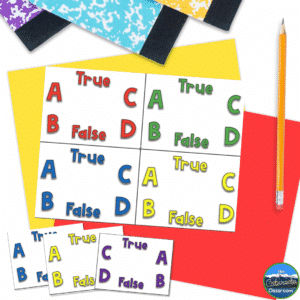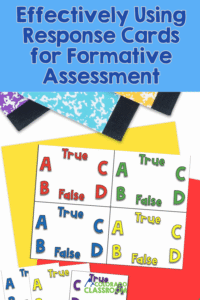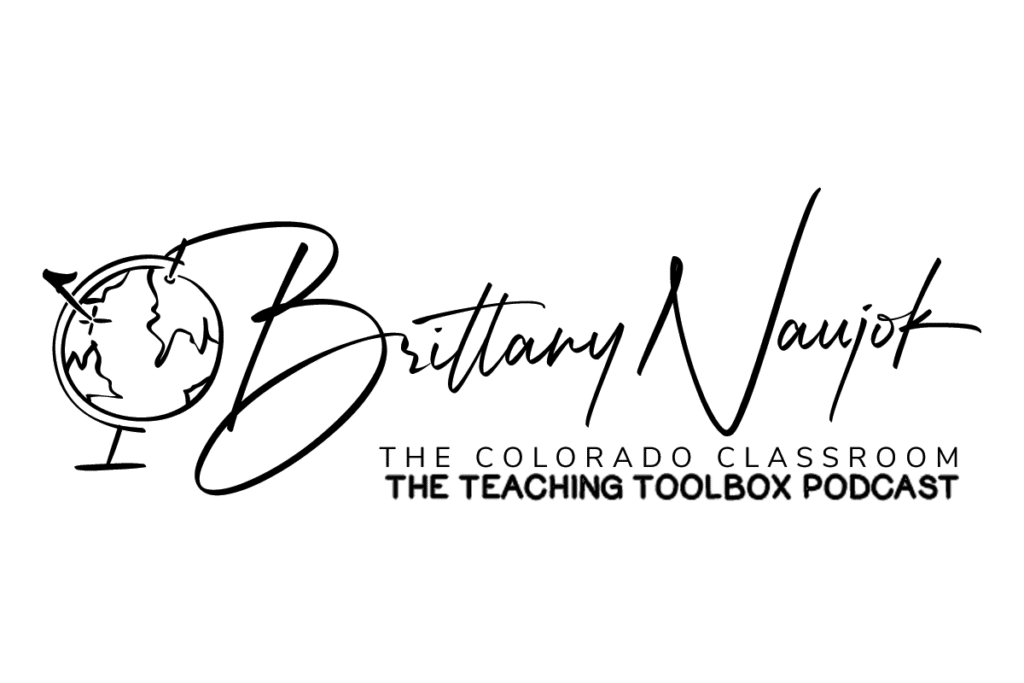Effectively Using Response Cards for Formative Assessment
Formative assessment is one of the most valuable tools we have as teachers because it gives us real-time insight into how our students are doing. Instead of waiting until the end of a unit to see if they “got it,” we can make adjustments right in the moment. Whether you’re teaching math, science, or social studies, formative assessment helps you pinpoint where your students are thriving and where they might need a little more support.

When you use formative assessment effectively, it shifts learning from a one-way street to a constant conversation. You can see who’s grasping new ideas, who’s still unsure, and who might be ready to move ahead. That’s where response cards come in. They make the entire process simple, visual, and even fun for your students.
What Is Formative Assessment?

Formative assessment refers to the range of activities and tools we use throughout a lesson or unit to gauge student understanding. Unlike summative assessments that happen at the end of learning, formative assessments take place during instruction. It can look like quick quizzes, journal reflections, exit tickets, peer discussions, or even whole-class activities that provide instant feedback.
The goal of formative assessment is not to assign a grade. It’s to gather information. It helps us see what’s working in our teaching and what might need to be adjusted. Maybe a small group needs extra support, or a concept needs to be retaught in a new way. Either way, formative assessment lets us make those instructional shifts before misconceptions take root.
Keeping learning fluid and responsive is what makes formative assessment such a game-changer. One of my favorite ways to do this in an engaging, low-prep way is through the use of response cards.
How Response Cards Make Formative Assessment Interactive

Response cards turn traditional formative assessment into an interactive experience that involves every student. Instead of calling on one person at a time, you get immediate feedback from the whole class at once. Students each have a card with multiple-choice and/or true/false options. When you ask a question, they simply place a finger or thumb over the correct answer.
These cards can be used for any subject area, such as math facts, vocabulary, science concepts, and historical figures. You name it. I’ve seen teachers customize sets to include chemistry elements or social studies explorers. The universal version works perfectly for multiple-choice or true/false questions. This means you can use it across all content areas without needing to prep anything extra.
Formative assessment becomes much more dynamic when your students are involved in this kind of quick-response learning. They stay alert, engaged, and eager to show what they know. You can glance around the room and instantly see who’s on track and who might need another example or a quick reteach before moving on.
Why I Love Using Response Cards for Formative Assessment

I love that response cards are both practical and flexible. They come in a variety of colors and formats. You can print them in black and white if you’re saving ink, or choose bright colors to assign different student teams. The versatility makes them a great fit for any classroom setup.
The real magic, though, is in how fast and easy they make formative assessment. Once your students have their cards, all you have to do is ask a question. When your students hold up their responses, you can immediately see the patterns in understanding. That allows you to adjust your pacing, clarify misunderstandings, or move on with confidence.
Plus, using response cards builds classroom community. Your students will love that their voices are heard without the pressure of speaking out loud. Everyone participates, and no one feels singled out. That level of inclusion turns formative assessment into something everyone looks forward to rather than dreads.
Formative Assessment in Action: Step-by-Step with Response Cards

Using response cards for formative assessment couldn’t be easier. All you have to do is start by printing the cards double-sided as directed. This way, when your student covers an answer, the letter or word matches up on both sides. No matter where you’re standing in the room, you can see their choice.
Next, ask a multiple-choice or true/false question. Then, have your students respond by covering their selected answer with a finger or thumb. Within seconds, you can scan the room and see the overall grasp of your class. It’s immediate feedback for you and your students.
This method keeps lessons moving, encourages participation, and helps you collect valuable data without stopping instruction for formal assessments. In other words, it’s formative assessment in a snap, simple, colorful, and effective.
Boosting Student Confidence Through Formative Assessment

When you use response cards as part of your formative assessment strategy, you’re helping your students build confidence. Since response cards let every student respond simultaneously and privately, there’s no spotlight on any one student. This low-pressure environment shifts the focus from “Did I get it right?” to “I’m showing what I know” and “I can grow from this.” That alone makes your classroom feel safe for risk-taking and strengthens student engagement.
The real power of formative assessment with response cards is in how quickly your students see their own progress. When a question is asked and your students hold up their cards, they get to see whether they were on target or need more support right away. That immediate feedback helps them understand their learning, clears the guesswork, and reduces the doubt that often comes when they aren’t sure where they stand.
When your students feel more confident, something wonderful happens. They raise their hands more, step out of their comfort zone, engage in discussions they might have avoided before, and keep trying even when a question is challenging. That means you spend less class time coaxing participation and more time deepening understanding. All of this means that your formative assessment practice empowers your learners.
Time to Try Formative Assessment with Response Cards

Formative assessment doesn’t have to mean more grading or longer prep. With tools like these response cards, it becomes an engaging way to connect with your students and instantly check their understanding. You can use them at any point in a lesson, whether that be when you’re introducing a new topic, practicing a skill, or reviewing before a test. Within moments, you’ll know who’s ready to move on and who might need extra support. It takes the guesswork out of teaching and replaces it with real-time clarity.
What makes response cards such a powerful formative assessment tool is how active and inclusive they are. Each of your students participates, not just the ones who raise their hands. They get to show what they know in a low-pressure, hands-on way that keeps the energy high and the classroom focused. It’s a quick, effective, and low-prep strategy that helps you adjust instruction in the moment.
Explore More Formative Assessment Ideas and Resources
If you’re ready to take formative assessment to the next level, be sure to check out my TPT store for classroom resources that make learning more interactive and meaningful. You’ll find activities designed to save time while keeping your students actively engaged.
And. . . don’t forget to tune in to The Teaching Toolbox podcast! Each episode is filled with practical ideas, teaching inspiration, and easy-to-implement strategies that will help you keep your students involved and motivated throughout your lessons. These resources will help you create a classroom where formative assessment truly drives growth and confidence.
Save for Later
If you love finding quick and meaningful ways to check in on your students, save this post for later! Formative assessment is one of those practices that never goes out of style. It helps you teach smarter, not harder. Pin this post to your favorite teaching board so you’ll have it handy the next time you want to make your lessons more interactive, visual, and fun.



Pingback: Why Complete Standardized Testing - The Colorado Classroom